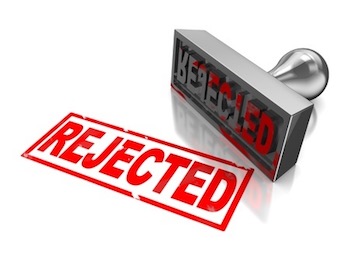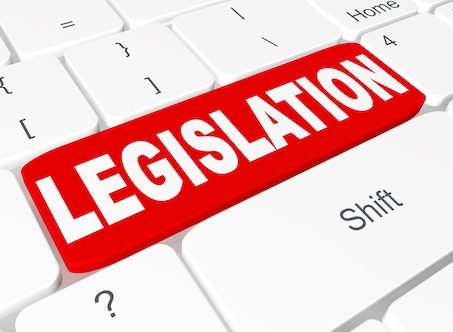“Significance” Of Inventor Contributions To AI-Assisted Inventions – Red Flags And Potential Traps Within Patent Office Guidance | Dunlap Bennett & Ludwig PLLC
Can we trust U.S.P.T.O. guidance on inventorship determinations for AI-assisted inventions, if that guidance runs headlong into case law precedent? Recently I started to believe the U.S.P.T.O. set a possible and unintended trap for its stakeholders. Their guidance calls something “significant” that other legal analysis would likely call “insignificant.” Inventors beware!
To set the stage, a colleague and I had just finished attending the U.S.P.T.O.’s webinar on Inventorship Guidance for AI-assisted Inventions. The Artificial Intelligence and Emerging Technologies Group put on the webinar – a fantastically knowledgeable workgroup within the U.S.P.T.O. shouldering the difficult job of providing guidance in an unsettled and emerging area of Patent Law. The group walked us through inventorship determination examples for AI-assisted inventions based on factors borrowed from Pannu v. Iolab Corp., 155 F.3d 1344 (Fed. Cir. 1998), set up five guiding principles, providing some practice tips.
It came up as a bullet to Guiding Principle 2, which states “Merely recognizing a problem or having a general goal or research plan to pursue does not rise to the level of conception.”[1] Guiding principle 2 aids in the evaluation of significance, and had the following accompanying bullet point, “a significant contribution could be shown in how the person constructs the prompt in view of a specific problem to elicit a particular solution from the AI system.”[2] That bullet point started my wheels spinning, but not with a view toward inventorship and Artificial Intelligence, but with its potential value concerning the evaluation of an additional element as a practical application under step 2A, prong 2, or as significantly more under step 2B under the Revised 2019 Patent Subject Matter Eligibility Guidance (“P.E.G.”). To illustrate, I’d like to juxtapose the Pannu Factor Analysis, laid out by the U.S.P.T.O., with a 35 U.S.C. 101 Subject Matter Eligibility Analysis of the following claim:
A method of identifying and synthesizing a lead drug compound to treat prostate cancer, the method comprises:
providing compound information and mutated androgen receptor protein (AR) sequence information inputs to a pre-trained Deep Neural Network (DNN), wherein the DNN outputs a numerical value representing binding affinity between the drug compound and the mutated AR;
from the output of the DNN, identifying a selected drug compound having a numeric value indicative of high binding affinity for mutated AR,
synthesizing a stable intermediate of the selected drug compound; and synthesizing a lead drug compound by introducing modifications to the stable intermedia (emphasis added).[3]
The Pannu Factors Analysis
The above claim was provided, along with a fact pattern, to determine if any of the four participants Marisa, Naz, Lauren, and Raghu were proper inventors. Inventorship is proper when a natural person contributes significantly to the invention recited in the claim by: (1) contributing in some significant manner to the conception or reduction to practice of the invention; (2) contributing to the claimed invention that is not insignificant in quality, when that contribution is measured against the dimension of the full invention; and (3) does more than merely explain to the real inventors well-known concepts and/or the current state of the art.[4]
Marisa and Naz were found to be inventors based on an analysis of the Pannu factors, but Raghu, along with Lauren was not.[5] I’d specifically like to focus on Raghu’s contributions to the invention and the accompanying analysis of the Pannu factors. Raghu, according to the fact pattern of scenario 1, provided the inputs to the pre-trained DNN which narrowed down candidate compounds.[6] Under the first factor of Pannu, this contribution could be considered a “significant” contribution to conception, according to the U.S.P.T.O.’s analysis.[7] However, the contribution was deemed insignificant in quality when measured against the invention thus ending Raghu’s inventive dreams.[8]
The important takeaway here Raghu’s contribution of “providing a compound information … to a pre-trained DNN…” has at least lukewarm approval as significant, according to the U.S.P.T.O. analysis.
35 U.S.C. 101 SME Analysis
Analysis of 35 U.S.C. 101 for subject matter eligibility is a two-step process outlined in §2106 of the Manual of Patent Examining Procedure, or MPEP.[9] I will provide an abbreviated analysis, ending before step 2B, for illustrative purposes.
Step 1 of the analysis determines if the claim in question is one of the four enumerated statutory categories of invention: process, machine, manufacture, or composition of matter.[10] The method above falls squarely into one of the four statutory categories, a process. Step 2A has two prongs, the first of which asks, do any of the claim limitations recite a judicial exception?[11] Clearly, the identifying step is directed toward a mental process, it is the observation, evaluation, or judgment of the outputs of the DNN to determine a desired characteristic of a drug compound. The second prong of step 2A asks if there are additional elements, and if so, do they integrate our abstract idea into a practical application.[12]
Our additional elements are the providing step and the two synthesizing steps. I think it is clear that the synthesizing steps form a practical application of any identified abstract idea and typically the analysis would end there, but I want to focus on the analysis of the providing step.
Typically, under step 2A prong 2, a providing step would find its way into the bucket of activities labeled “insignificant extra-solution activities,” or more specifically “insignificant pre-solution data gathering.” The MPEP provides three factors to determine the insignificance of extra-solution activities, which are: (1) whether the extra-solution limitation is well known, (2) whether the limitation is significant, or (3) whether the limitation amounts to necessary data gathering and outputting.[13] However, only factors (2) and (3) are considered in step 2A.[14]
The analysis of factor two is guided by an inquiry into whether the claim limitation imposes meaningful limits such that the claim is not nominally or tangentially related to the invention.[15] Using the U.S.P.T.O.’s hypothetical fact pattern, the limitation indicates a preferred characteristic of a drug compound, which is utilized as the basis for synthesizing the final drug product.[16] The limitation appears to be meaningful because it provides the binding affinity by which a drug compound, from which all compounds are synthesized, is selected. Thus, it appears that the “providing” limitation is a significant concerning factor (2).
The analysis of factor three is guided by an inquiry into whether all uses of the recited judicial exception require such data gathering.[17] While there is no guidance for what level of granularity is required for analysis of “such data gathering,” it is clear that any recitation of an identification step requires the gathering of data for identification. Furthermore, it is helpful to look for guidance from court cases that implicate data gathering, such as Electric Power Group v. Alstom, which stated:
The claims in this case do not even require a new source or type of information, or new techniques for analyzing it. See, e.g., ’710 patent, col. 8, lines 51–62 (referring to existing phasor data sources); J.A. 6969–71 (describing workings and history of phasor data use); Electric Power Group Br. at 21–22; Reply Br. at 5 (new algorithms not claimed). As a result, they do not require an arguably inventive set of components or methods, such as measurement devices or techniques, that would generate new data. They do not invoke any assertedly inventive programming. Merely requiring the selection and manipulation of information—to provide a “humanly comprehensible” amount of information useful for users, Reply Br. at 6; Electric Power Group Br. at 14–15—by itself does not transform the otherwise abstract processes of information collection and analysis.[18]
Applying the U.S.P.T.O. fact pattern to the analysis in Electric Power Group, we see that our providing limitation appears much more like routine data gathering. For example, according to the fact pattern, the data provided by Raghu was from a well-known cancer-related compound data set provided by the National Cancer Institute, i.e. it was not a new source of data.[19] Furthermore, the DNN that performed the processing was a ready-to-use system that can predict the strength of interaction between drug-target pairs, i.e. there was no new technique for analyzing the provided data.[20] Based on these two factors, it appears our limitation contains only routine data gathering and should be considered insignificant with respect to factor (3). The U.S.P.T.O. provides no guidance on the balancing of factors (2) and (3), and in fact the factors themselves are a permissive consideration for examiners.[21] However, factor (3), in light of the analysis provided by the CAFC in Electric Power Group seems to indicate that the “providing” limitation should be a form of insignificant pre-solution data gathering.
The important takeaway here is that, in stark distinction to the analysis under the Pannu factors, Raghu’s contribution of “providing a compound information … to a pre-trained DNN…” seems to have no significance when it is considered for subject matter eligibility purposes.
CONCLUDING QUESTIONS AND THOUGHTS
Ultimately, there is a contradiction in significance when analyzing the providing step due in large part to the second factor of Pannu weighing against significance. However, it may not be hard to draft a claim seemingly introducing the paradox, that a claim phrase can be significant for purposes of inventorship, but insignificant for purposes of subject matter eligibility and vice versa. As AI innovation accelerates further concerns and questions are likely to come to light.
[1] Inventorship Guidance for AI-Assisted Inventions, 89 Fed. Reg. 10043, 10049 (Feb. 13, 2024).
[2] Id.
[3] Developing a Therapeutic Compound for Treating Cancer, AI-related Resources (February 2024),
[4] Pannu v. Iolab Corp., 155 F.3d 1344, 1351 (Fed. Cir. 1998).
[5] Developing a Therapeutic Compound for Treating Cancer, supra, at 4-6.
[6] Id. at 2.
[7] Id. at 5.
[8] Id. at 5-6.
[9] See Manual of Patent Examining Procedure, 9th ed., rev. 7 (2022) (hereinafter “MPEP”).
[10] MPEP §2106.03.
[11] MPEP §2106.04(II)(A)(1).
[12] MPEP §2106.04(II)(A)(2).
[13] MPEP § 2106.05(g).
[14] Id.
[15] Id.
[16] Developing a Therapeutic Compound for Treating Cancer, supra, at 3.
[17] MPEP § 2106.05(g).
[18] Electric Power Group, LLC v. Alstom S.A., 830 F.3d 1350, 1355 (Fed. Cir. 2016).
[19] Developing a Therapeutic Compound for Treating Cancer, supra, at 2.
[20] Developing a Therapeutic Compound for Treating Cancer, supra, at 1.
[21] MPEP § 2106.05(g) (stating examiners may consider the factors).
[View source.]






